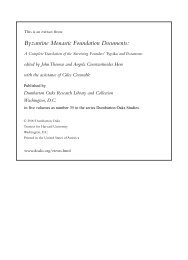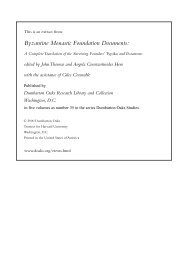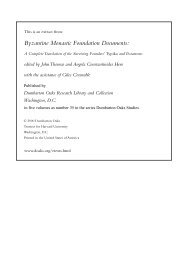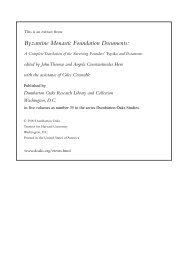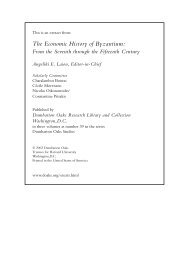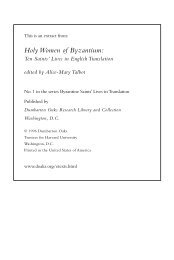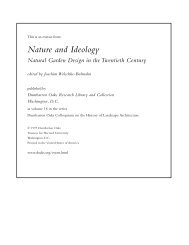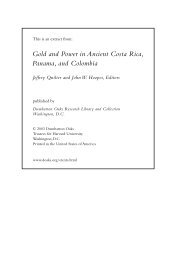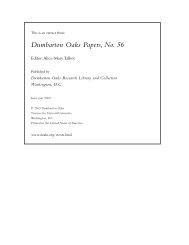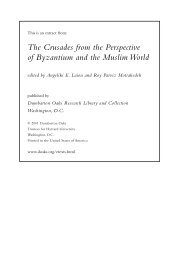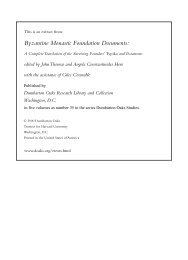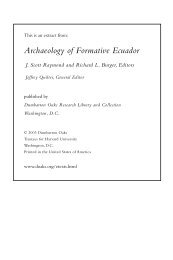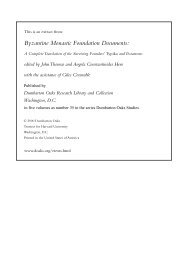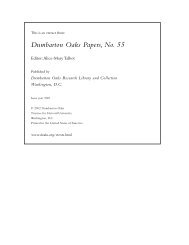Download: Mosaics of Hagia Sophia, Istanbul - Dumbarton Oaks
Download: Mosaics of Hagia Sophia, Istanbul - Dumbarton Oaks
Download: Mosaics of Hagia Sophia, Istanbul - Dumbarton Oaks
You also want an ePaper? Increase the reach of your titles
YUMPU automatically turns print PDFs into web optimized ePapers that Google loves.
Plate 1<br />
Tracing <strong>of</strong> the head <strong>of</strong> the Virgin enthroned in the apse<br />
Graphite on linen paper<br />
Byzantine Institute, N. Kluge, ca. 1930<br />
<strong>Dumbarton</strong> <strong>Oaks</strong>, Byzantine Photograph and Fieldwork Archives, acc. no. F2629<br />
This tracing <strong>of</strong> the Virgin’s head is one <strong>of</strong> eleven tracings made by Nicholas<br />
Kluge <strong>of</strong> the apse conch mosaics. The size <strong>of</strong> her head is 53 centimeters. The<br />
Virgin is wearing a maphorion over a kerchief. She has an oval face with elongated<br />
nose, small full lips, and large eyes that gaze to the left. The mosaicist used different<br />
sizes <strong>of</strong> tesserae for the execution <strong>of</strong> the nimbus, garments, and face. The largest<br />
tesserae were used to outline her nimbus, the silhouette <strong>of</strong> her head, and the folds<br />
<strong>of</strong> her garments. Medium-sized tesserae were used to outline her face and facial<br />
features, including her eyes, nose, and lips. The smallest tesserae were applied in<br />
modeling the flesh tones <strong>of</strong> her cheeks, forehead, nose, chin, and neck.<br />
The tesserae <strong>of</strong> the Virgin’s head were used differently from those in the<br />
church father figures (Figs. 27, 28; Pls. 4, 5), which were executed several decades<br />
later. For example, the nimbus <strong>of</strong> the Virgin is outlined with four rows <strong>of</strong> red glass<br />
tesserae; the nimbi <strong>of</strong> the church fathers contain only two rows. The size <strong>of</strong> the<br />
tesserae in the outlines <strong>of</strong> their nimbi is nearly the same as that <strong>of</strong> those in their<br />
garments. Since the apse conch is high above the ground, the mosaicist used<br />
contrasting sizes <strong>of</strong> tesserae to achieve an image <strong>of</strong> the Virgin that would carry the<br />
length <strong>of</strong> the nave.<br />
69




